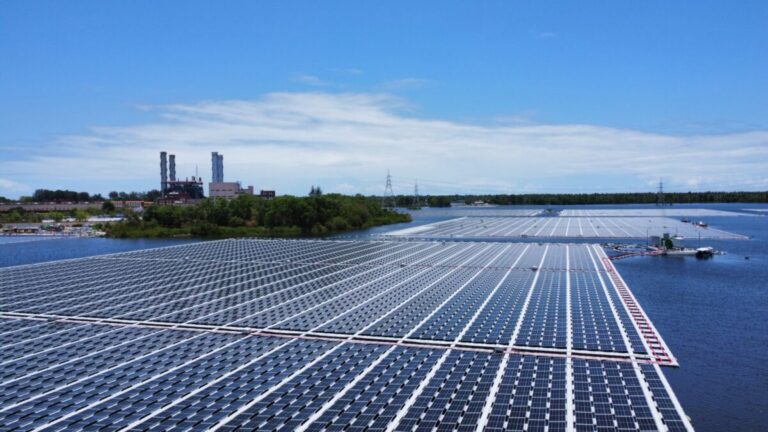A new report prepared under the Indo-German Technical Cooperation for Innovative Solar Energy (IN Solar) shows that water bodies in interior India have the technical potential to host 206.7 GWp of floating solar capacity.
The team used GIS-based data for all water bodies in India (calculated in square kilometres) by referring to the European Commission’s Copernicus programme.
The dataset was filtered to include water bodies with a usable area of more than 0.015 square kilometers, with a water availability of 12 months, while water bodies in protected areas were excluded. To install 1 MW of floating PV, an area of 0.015 square kilometers is required.
The project was launched under the guidance of the Indian Ministry of New and Renewable Energy and is funded by the Deutsche Gesellschaft für Internationale Zusammenarbeit GmbH (GIZ). Ernst and Young LLP (EY LLP) led the project, together with CSTEP and Fraunhofer ISE as partners.
In a moderate scenario, the report said India could install 30 GW of cumulative floating solar capacity between 2024 and 2040. They assumed that 1 MW of floating solar would require capital expenditure worth a levelized cost of energy (LCOE) of INR 4.32 ($0.052)/kWh.
The research team assumed an annual reduction in capital investments of 2.5%, resulting in a gradual decline in the LCOE of floating PV installations, starting in 2024 and continuing until 2040. The LCOE is expected to decline to INR 3.72 /kWh in 2030 and INR 2.90. /kWh by 2040.
This content is copyrighted and may not be reused. If you would like to collaborate with us and reuse some of our content, please contact: editors@pv-magazine.com.


